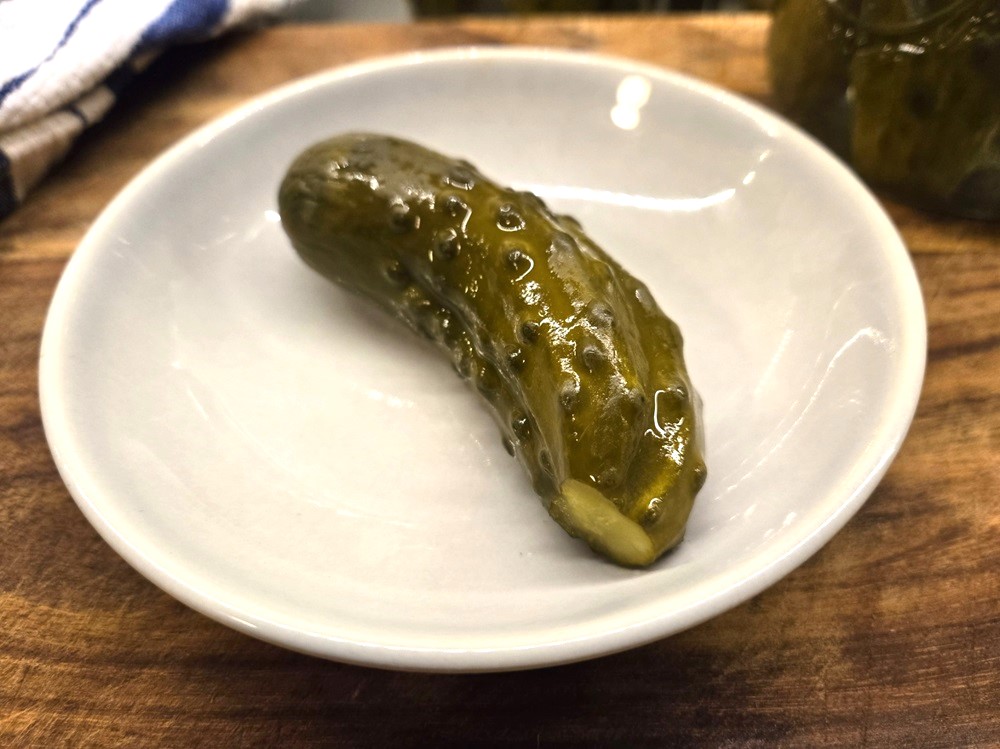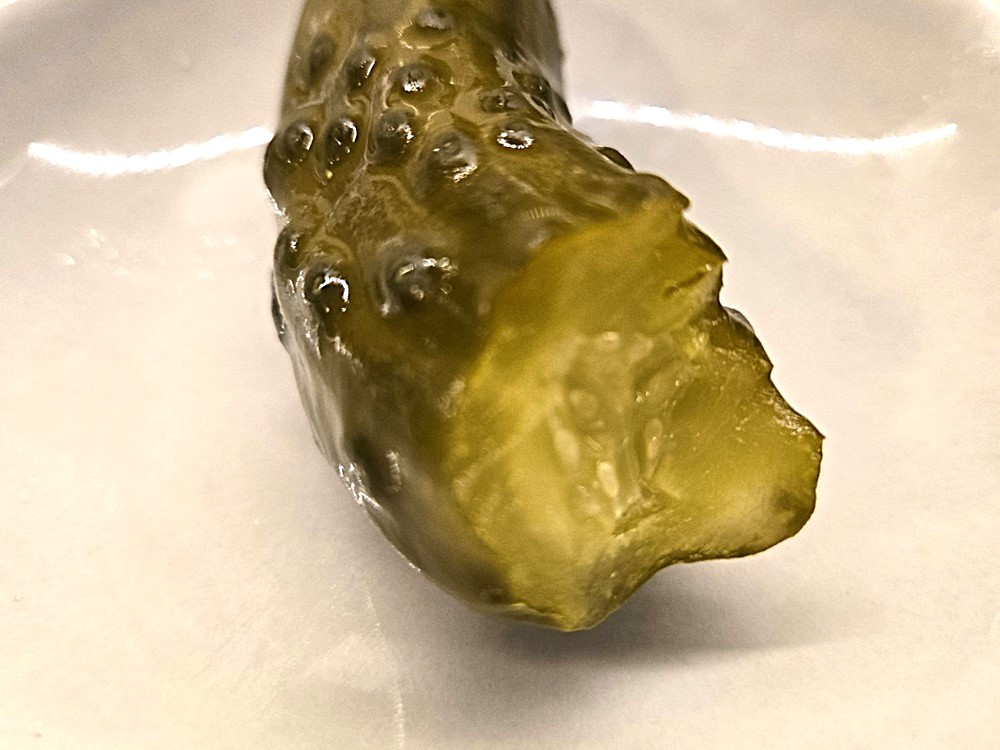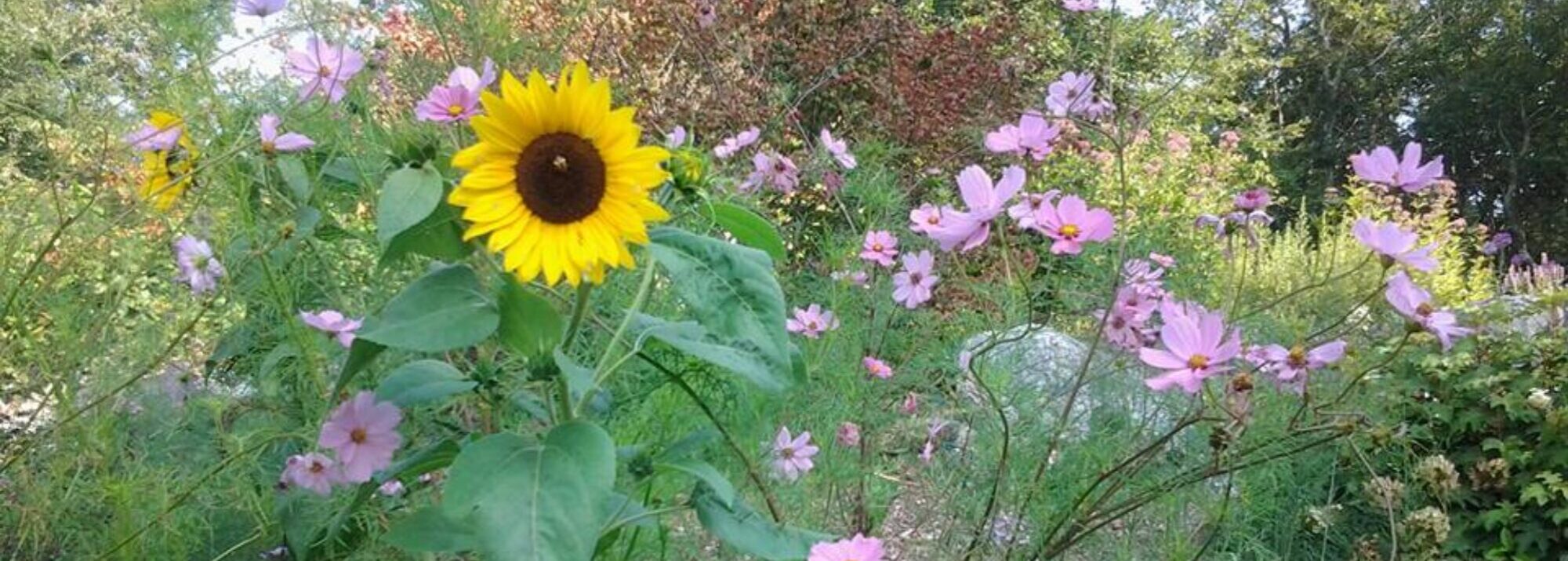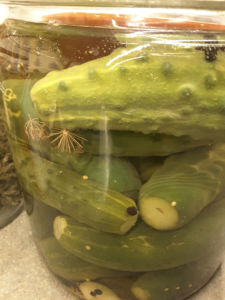Fermented Dill Pickles are why we grow so many cucumbers every year. These Fermented Dill Pickles are the star of the cucumber season. It didn’t start out that way. I love cucumber pickles – brined dill pickles, hamburger dills, and bread and butter pickles… But you can only fill your pantry with so many jars of pickles, so I focus on small batches. The first year I grew cucumbers, I started the whole pack of seeds, and quickly realized that I was in trouble. So many cucumbers!
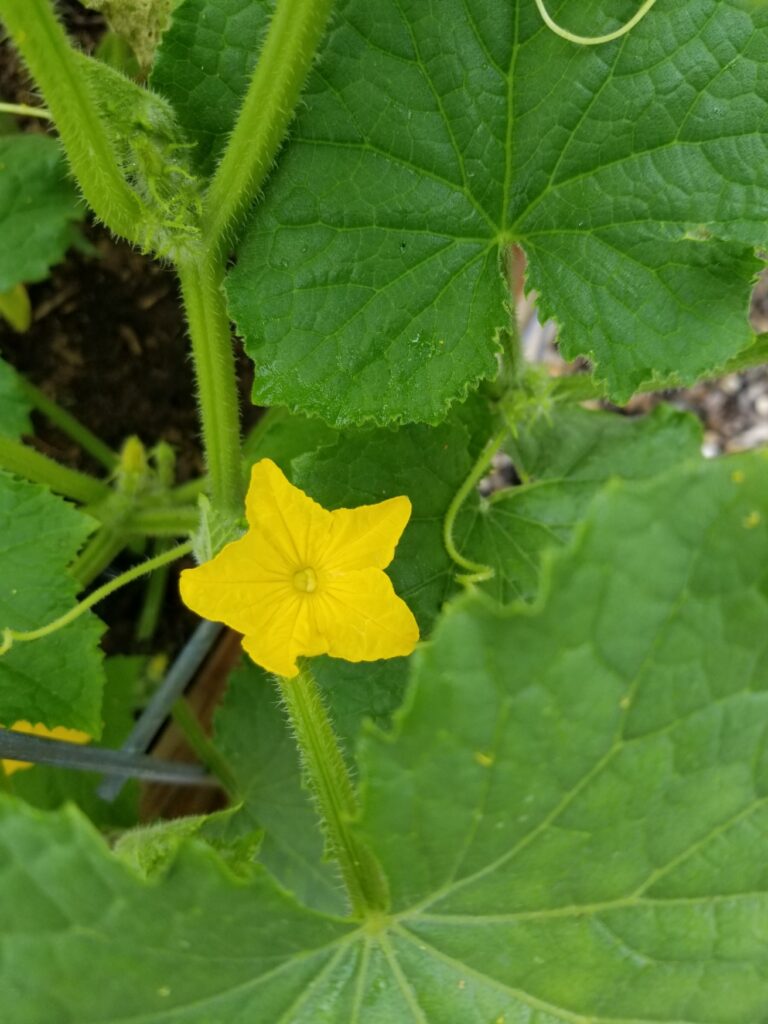
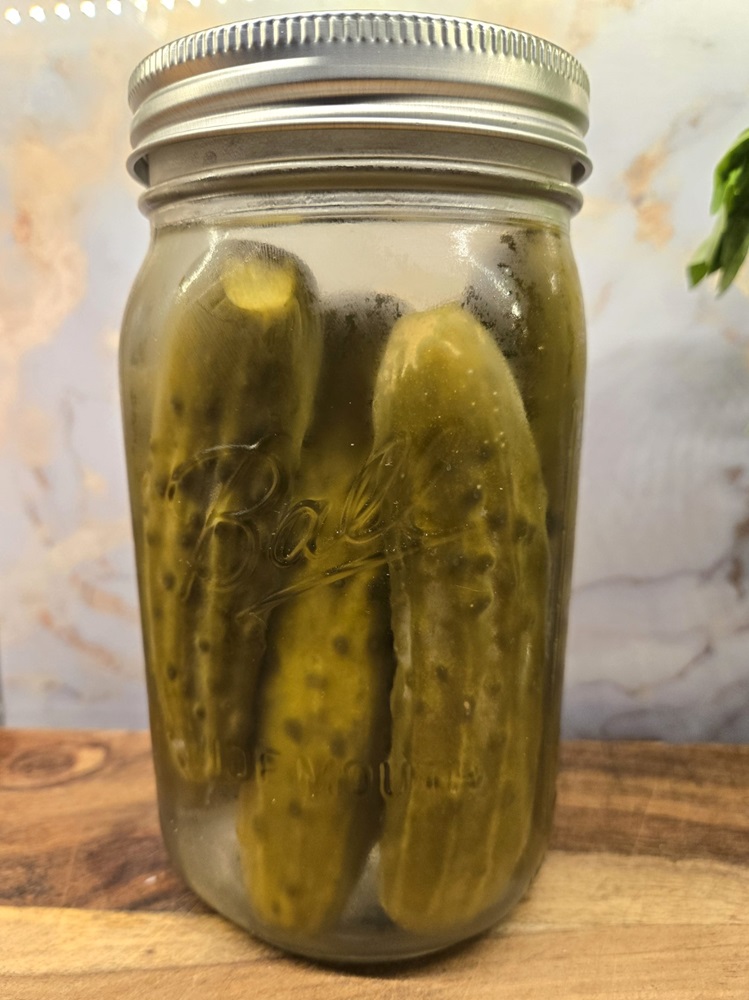
Depending on the size of the jar or crock you have, you can ferment as many cucumbers as you have on hand after finishing all of your small batch canning projects. The only challenge, and the problem is real, is that once they’re fully fermented, you must stash them in the fridge to slow down the fermentation process. So you may be limited by fridge space. If so, you have the happy problem of having to eat Fermented Dill Pickles every day!
If you’ve never fermented vegetables, it’s time that you start. It’s so much easier than you might guess, and the resulting pickles are so complex and addictive. What’s more, they’re incredibly good for you – full of probiotics, anti-oxidants, and vitamins and minerals. I recommend that your start with cucumbers to make Fermented Dill Pickles, but once you learn how easy it is, and how great it makes your belly feel, you’ll be fermenting other vegetables as well – carrots with oregano, mixed hot peppers with garlic, cabbage… The characteristic tang of fermentation will become something you look for. Check out The Art of Fermentation by Sandor Katz if you’re interested in learning more.
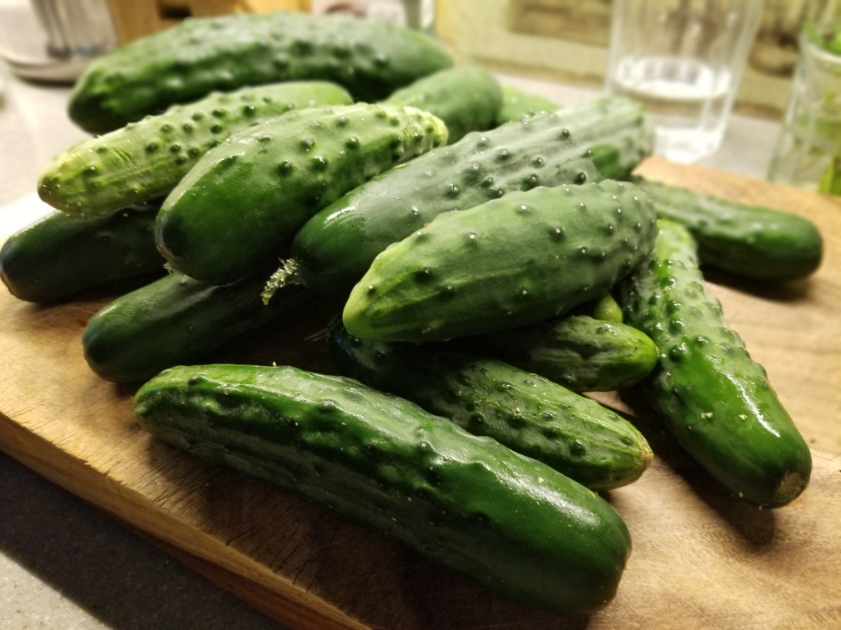
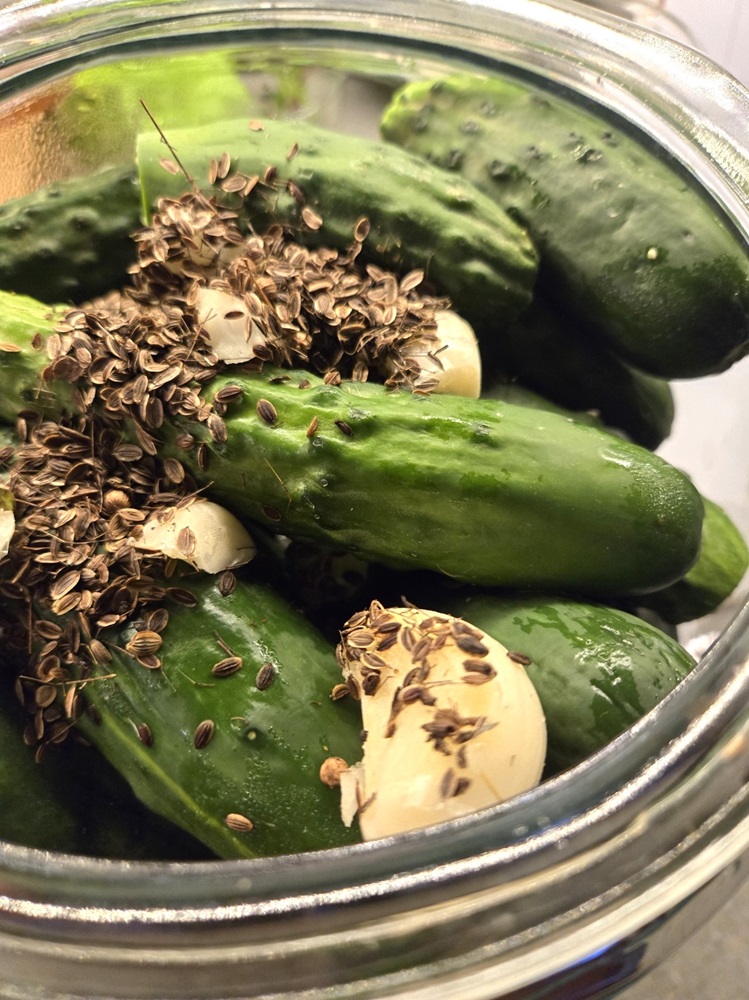
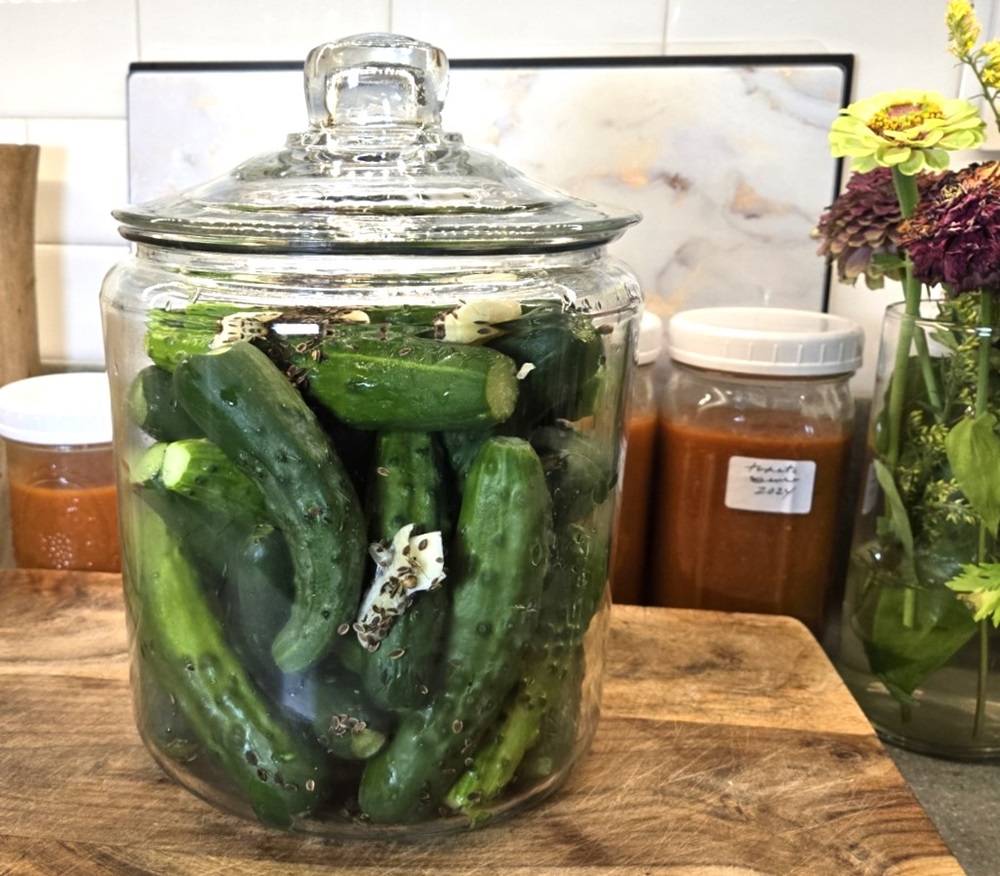
To make Fermented Dill Pickles, start with blemish-free cucumbers that you’ve washed and trimmed, and simply submerge them in a brine with whatever flavors you want to infuse them with. The brine is simple – 1 T canning salt dissolved in 2 cups of water for each quart of pickles; I like to add garlic, dill seed, and sometimes black peppercorns. And then you wait. That’s the hardest part. The longer you wait the better, in terms of flavor!
Fermented Dill Pickles
Equipment
- fermentation jar or crock (I uses a gallon-sized jar)
- 4 quart-sized canning jars
Ingredients
PICKLES
- 4 pounds medium cucumbers
- 4 cloves garlic
- 2 T dill seed
- 1 t black peppercorns (optional)
BRINE
- 4 cups water
- 2 T canning salt
Instructions
- Wash and dry your equipment – Wash the fermentation jar, tongs, the plate you'll be using to hold the cucumbers down in the brine, and of course, your hands.
- Wash and trim your cucumbers; prep the garlic – Wash the cucumbers, trim a bit off of each end, and slice off any blemishes. Peel and smash the garlic.
- Make the brine – Add the brine ingredients to a saucepan and bring to a boil. Allow to cool.
- Fill the fermentation jar/crock – Add the smashed garlic, dill, and peppercorns (if you're using them) to the bottom of your fermentation jar, then load the jar with the trimmed cucumbers. Pour the cooled brine over the cucumbers, to cover. Use a plate or a fermentation weight to keep the cucumbers submerged. Set aside in a cool, relatively dark spot.
- Finish and wait – Check the pickles every few days to ensure that they're not bubbling over and that the cucumbers are still submerged in the brine. If any white yeast is floating on the top, just skim it off. Let the pickles ferment for not less than 2 weeks, and for up to 2 months. Then rinse them and move them to quart-sized mason jars covered with a brine made from one cup vinegar, one cup water, and one T salt per jar, and stash them in the fridge. They'll last for much longer than the time it will take you to eat them.
